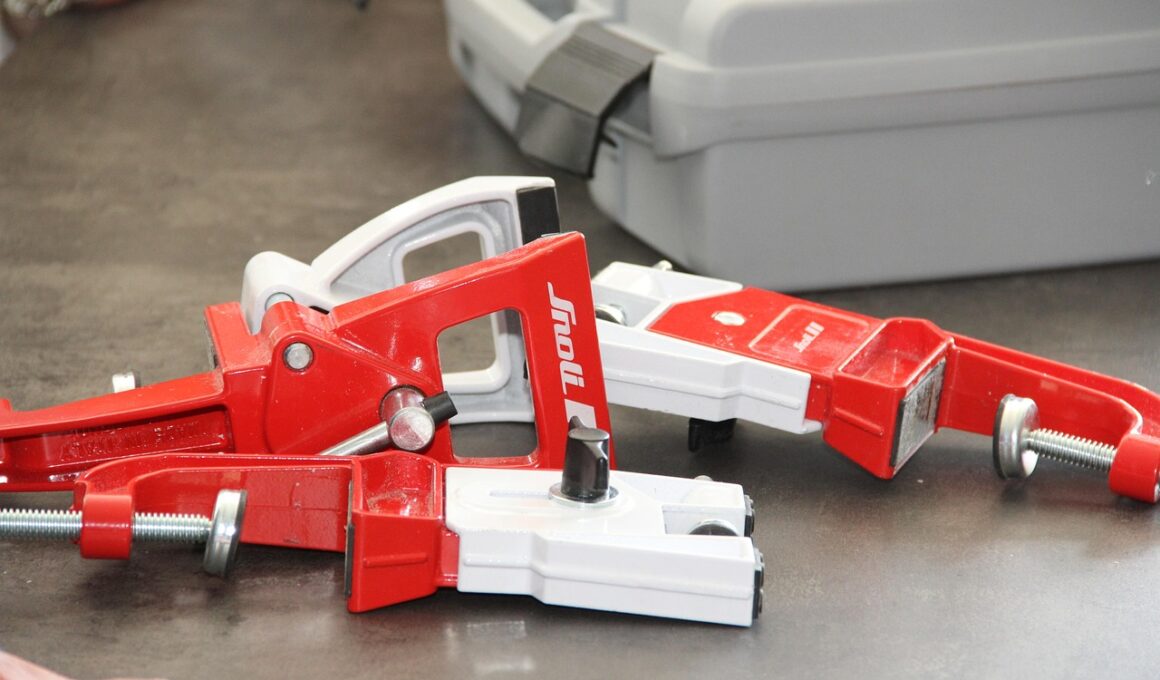Seasonal Ski Maintenance: Preparing Your Skis for Winter
As winter approaches, the excitement of skiing begins to stir. Essential to enjoying the slopes is proper ski maintenance, particularly wax application and base care. Ski waxing improves glide and protects the base from damage caused by snow conditions and weather. Before the first run, ensure your skis are fully prepared. Start by inspecting your skis for any signs of wear or damage, including deep scratches that might need repair. Clean the base thoroughly to remove old wax residue and dirt, as this helps the new wax adhere better. Once cleaned, it’s crucial to assess the overall structure of the ski. If any damage is discovered, it’s best to visit a professional ski technician for repairs. Taking these first steps can set the foundation for a great ski season. Furthermore, understanding the wax options available can enhance performance based on conditions. Choose from a variety of waxes, from warmer to colder, designed for different snow types. Selecting the right wax ensures optimal performance and longevity of your ski equipment. Keeping these tips in mind is vital for a smooth transition into winter adventures.
In addition to waxing, one must consider the importance of base repair. The bottom of your skis is in constant contact with the snow, meaning wear is inevitable. Small scratches may be repaired using p-tex, while larger gouges may require professional attention. Look for a repair kit available at your local ski shop, which will include tools necessary for basic repairs. If your skis have significant damage, don’t hesitate to consult a professional who can assess the extent and perform high-quality repairs. The goal is to maintain the integrity of the base, ensuring it retains its ability to glide smoothly on snow. Being proactive regarding maintenance encourages a healthier ski setup. Moreover, tuning your edges is another essential task that processes skiing safety, precision, and efficiency. Sharp edges provide better control, particularly on icy patches. This involves using a diamond stone or file to sharpen the edges carefully. After sharpening, they should be polished to avoid any burrs that could hinder performance. You can achieve this at home with practice. However, don’t hesitate to seek professional help if you’re unsure about the process, as improper edge tuning can lead to unwanted consequences on the slopes.
Choosing the Right Wax
Selecting the correct wax based on temperature and snow type is crucial for performance on the slopes. Different conditions may require specific wax formulations. Cold temperatures often necessitate harder wax, while softer wax is better for warmer conditions or wet snow. The market today offers many types of wax: hydrocarbon, fluorocarbon, and even environmentally friendly options. Hydrocarbon wax is an excellent choice for those who ski recreationally. It provides decent performance without breaking the bank. Fluorocarbon, on the other hand, is typically chosen for race conditions, as it maximizes speed and glide. While this wax type can be pricier, it also may resist dirt accumulation well. Environmentally conscious skiers may be attracted to more eco-friendly alternatives; these options are being developed to provide good glide with less impact. Understanding the different types of wax allows skiers to make informed decisions tailored to their personal skiing experience and local conditions. Consider experimenting with different waxes to find what works best for you. Ultimately, it’s about enhancing your skiing experience and ensuring that you enjoy every moment on the slopes to its fullest.
Following the waxing and tuning processes, one must also consider how to store skis in preparation for the winter season. Proper storage not only prolongs the life of the skis but also sets you up for success when it’s time to hit the slopes. Skis should be stored in a cool, dry place away from direct sunlight. Avoid damp areas that could promote rust in the bindings or damage to the skis’ structure. Before storing, consider applying a layer of wax to the base, even if you won’t be skiing for a while. This protects the base from drying out and helps prevent damage. Furthermore, ensure that bindings are set correctly. If you haven’t skied in some time, adjusting the release settings is essential for safety. Annual professional binding checks are recommended. Additionally, considering the storage position matters. Store skis upright, avoiding pressure on the camber. Using a ski bag or rack can provide added protection from dust and scratches. Following these storage steps can vastly improve your experience upon returning to the slopes, providing confidence in the condition of your gear when you’re ready to go.
Regular Maintenance Checks
Post season, it’s crucial to keep in mind the importance of regular maintenance checks. After each ski trip, inspecting your gear promptly helps catch any potential damages early. Regularly clear the bases of dirt and debris and check the bindings for wear. Scan for scratches or gouges, and address them right away to ensure you’re not compromising performance. Regular checks also encourage you to perform smaller maintenance tasks like re-waxing, which can become neglected during a busy ski season. The frequency of waxing will depend on how often you ski and the conditions. If you’re skiing frequently in harsher conditions, you may need to wax them more often. Conversely, lighter users may not require as many. Pay attention to the visibility of the base, as it indicates whether wax is needed. If the base appears dry or white, it’s time to reapply. Adopting this routine not only helps preserve your skis but also improves your skiing experience. Keeping your skis in good condition is a worthy investment, ensuring unforgettable times on the mountain without unfortunate surprises that can arise from neglected equipment.
The role of a professional ski technician should not be underestimated. If you feel overwhelmed by maintenance tasks or lack the tools and knowledge, entrusting your skis to a professional is wise. Professional services offer meticulous tuning, ensuring your skis are in optimal condition. A specialist can assess the condition of your equipment more thoroughly than the average skier. They have access to specialized equipment and years of experience. While this may incur a cost, it translates to improved performance on the slopes. Professionals can also help diagnose issues that may not be immediately noticeable. They can provide valuable insights to better your skiing based on your specific equipment type and skiing style. If you plan to ski often or at a high level, investing in professional maintenance may be necessary for peak performance. They can offer tailored solutions or recommendations that can elevate your skiing abilities. Regular professional maintenance may also help extend the life of your skis, assuring they can perform for many seasons to come. Don’t hesitate to build a relationship with a reliable technician for consistent care of your beloved gear.
Conclusion
In conclusion, maintaining your skis seasonally is essential for their longevity and performance. Embracing a systematic approach to ski maintenance invites exciting skiing experiences, enabling you to get the most out of your time on the slopes. Methods such as choosing appropriate wax, regular checks, and timely repairs can enhance your skiing adventures while ensuring safety. Skis are a substantial investment, making upkeep highly important for both safety and enjoyment. From cleaning and waxing to professional servicing, every bit of maintenance contributes positively to how your skis perform through winter. A well-maintained pair of skis offers better glide, control, and overall enjoyment throughout the season. Be proactive about addressing any wear-and-tear promptly. Regular upkeep safeguards your equipment and makes skiing more enjoyable. Additionally, always seek professional help for complex issues to ensure everything is up to par. Understanding the fundamentals of ski waxing, maintenance, and repair increases confidence on the slope. Finally, remember that investing time in ski care goes hand-in-hand with the joys of skiing and minimizing the risk of mishaps on the mountain. Prepare well, ski well, and enjoy every thrilling moment this winter!
With these steps in mind, you are well on your way to preparing your skis for a fantastic winter season. As the excitement builds, take the necessary time to ensure everything is in excellent condition before you embark on your skiing adventures this winter. The joy and anticipation of fresh powder await you, and proper maintenance will ensure your gear is ready to perform when you are. Happy skiing!


